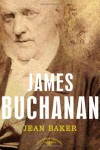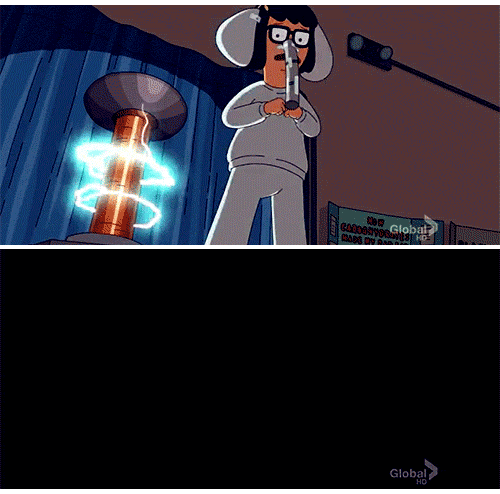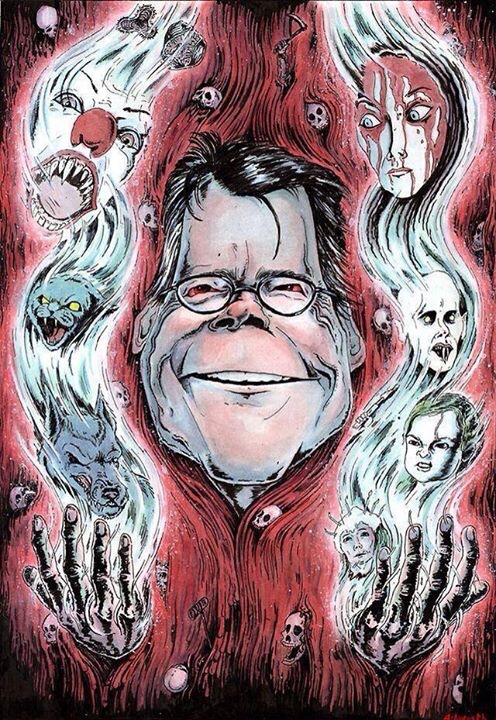Seriously, Read a Book!
Thoughts on books, often interpreted through the high-brow prism of cartoon (read: Archer) references. Wait! I had something for this...
Currently reading
AC/DC: The Savage Tale of the First Standards War

Electricity and magnetism have always possessed a certain “wow” factor. Science often inspires a state of awe and wonder, but (to date) the likes of thermodynamics and/or stoichiometry have yet to inspire a Bar Mitzvah dance craze (though I'd definitely be down for learning the Thermodynamic Slide if it comes up).
Almost two centuries after Michael Faraday and James Clerk Maxwell extended unified theories of electromagnetism, the applications thereof continue to excite and boggle minds. The magical allure of electricity is what drew crowds to the shows of Dr. Archibald Spencer—a crowd which included (in 1743) one Benjamin Franklin.
Fast Forward to the Edison Era
Though the book contains interesting anecdotes on (and clears up some misconceptions about) Franklin, Faraday and the early electromagnetic pioneers, the players in the titular standards wars really begin with Thomas Alva Edison. The Edison family had way of landing on the wrong side of history: Grandfather John Edison was a staunch supporter of the crown during the American Revolution, resulting in a quick getaway to Nova Scotia when things didn't pan out too well for Loyalists; Edison's father, Samuel, was exiled back to America after participating in the Mackenzie Rebellion against the government of Ottawa.
In the years to come, little Tommy Edison would proudly carry on this heritage of stubbornness in the years to come. Edison was brilliant, obsessive, and also kind of a jerk. He was deaf(ish) which was used to excuse some of his abstruseness, but still… Edison's rise from homespun tinkerer to “Wizard of Menlo Park” had several contributing factors including his acute sense of the power of the press—what it all came down to, though, was that Edison was a shrewd businessman.
The Business of Electricity
Thomas Edison was all about patenting his inventions (over 1,000 of them during his lifetime). He also knew that meaningful adoption of a new technology was about more than just selling a piece of equipment. The lightbulb was meaningless without a power source, and it just so happened that Edison invented and patented the direct current (DC) power network. But, before the “War of the Currents” could begin, Edison had to contest with the existing competition—gas lighting.
I'm not going to go into the ins and outs of the currents and technologies themselves—pretty much all you need to know was that alternating current (AC) was soon fighting for the same market as Edison and his DC setup.
Cast of Characters:
Edison (far left) you've met. The thoughtful looking fellow to Edison's right is Nikola Tesla. Though Tesla was decidedly more scientist than businessman (just one of the many things that made his brief stint working for Edison a bad fit), he knew enough to get eager financial backers excited about his patented AC induction motor and transformer (both of which were licensed to the fellow on the far right, George Westinghouse). If there's a super-villain in this lineup, however, it's definitely DC-advocate Harold Pitney Brown.
Sparks Fly!
Once Westinghouse established his first large AC power plant (the type that's most likely powering your lights today), the advantages of AC in traversing long distances posed a real threat to the DC market. So, the Edison team (though they would make sure that technically Brown was not in Edison's official employ) turned to the tried and true tactic of fear mongering!
Though I've accepted the fact that, yes, sometimes the life of an animal must be sacrificed in the name of public health, Harold Pitney Brown's experiments were far from scientifically sound. The 40 or-so dogs rounded up and enlisted in Brown's desired demonstrations of the dangers of AC varied in shape, color, health and size– none of which were noted with sufficient detail (“Saint Bernard puppy” doesn't give us enough data to leverage lessons learned). The first of these experiments took place with only DC-loving colleagues present, but even they became reluctant witnesses as Brown subjected the dogs to consecutive shocks of varying voltages and increments of time in between (one man present actually adopted one of the dogs in order to spare it from any more pain).
Electrocuting dogs and horses in public (always in scenarios sufficiently manipulated to make AC seem the more dangerous of the currents), however, just wasn't enough. So, when the states were looking to avoid the easily botched hangings of condemned prisoners by finding a new lethal replacement, Brown was all too happy to offer up his assistance in making AC the current of death.
Aww-Topsy at Her Autopsy:
Early electrocutions did not always go as planned. While Brown was usually on-hand, Edison stayed in the background (though he did suggest the act of death by electric chair being “Westinghoused”). However, when a former circus favorite in her baby elephant days, Topsy, sent a few too many handlers to meet their makers, Edison was ready and willing to be on hand.
Conveniently enough, Edison had recently invented a contraption that could take many pictures in quick succession, the Kinetographic Camera, so real footage of Topsy's execution exists to this very day. However, the version from the Topsy episode of Bob's Burgers is just so much more fun.
In case that didn't do it for you, here's a clip from the “musical re-imagenactment of the very uplifting story of Thomas Edison and Topsy the elephant” starring one Tina Belcher.
Parting Thoughts:
This book was fun—a lighthearted behind the scenes look at a scientific battle that merits an easy 3.5/5 stars. Also, for those of you who are planning on reading Stephen King's latest book, Revival, the two books pair quite nicely (like a Burgundy Pinot Noir with an earthy Bison Rib Eye). Also, don't electrocute animals. Who knows—they might be able to give you some really good advice.
 1
1
FREE: Bryan Cranston Reading “You Have To F--King Eat”

Currently FREE on Audible as read by Bryan Cranston!! You Have to F--king Eat!
Publisher's Summary:
Cranston (Breaking Bad, Malcom in the Middle) follows in the exasperated footsteps of Samuel L. Jackson, giving voice to the long-suffering father whose indifferent child will just not eat in this hilarious follow-up to Adam Mansbach's international best seller, Go the F--k to Sleep.
Mansbach's long-awaited sequel is about that other great parental frustration: getting your little angel to eat scomething that even vaguely resembles a normal meal. Profane, loving, and deeply cathartic, You Have to F--king Eat breaks the code of child-rearing silence, giving moms and dads (new, old, grand-, and expectant) a much-needed chance to laugh about a universal problem.
Anchored by a hilarious performance from Cranston, You Have to F--king Eat is the perfect blend of talented voice actor and subversive fun that expertly captures Mansbach’s trademark humor. Due to its explicit language, you probably shouldn't play this one for your kids.
You Have to F--king Eat is available free through 12/12/14.
 1
1
Revival: A Novel
 Having just mused about the wonder evoked by electricity through a couple centuries of science in my review for AC/DC: The Savage Tale of the First Standards War, I'll keep this review light on history lessons. However, there is one parallel that bears mentioning—the notion that electricity (in both fact and fiction) lies at the very core of what it means for something to be alive! As one of my favorite mad scientists once said:
Having just mused about the wonder evoked by electricity through a couple centuries of science in my review for AC/DC: The Savage Tale of the First Standards War, I'll keep this review light on history lessons. However, there is one parallel that bears mentioning—the notion that electricity (in both fact and fiction) lies at the very core of what it means for something to be alive! As one of my favorite mad scientists once said:
Mary Shelley was, at the very least, aware of (if not inspired by) the late 18th-century scientist, Louis Galvani's, experiments with “animal electricity” when she penned Frankenstein; or, The Modern Prometheus in 1818. From there, it would take another 80 years or so before the defibrillator turned up in its most basic form. Even in modern wilderness medicine, lightning remains the perpetual wild card.

Now, just imagine if there was a new kind of electricity, a secret electricity– one that a god-fearing person might refer to as some sort of Holy Voltage. Well, suffice it to say that quite a bit can happen.

How did Revival stack up?
It's possible that my recent reading of Pet Sematary influenced how similar the two seemed to me at times. It's no Shining, or Misery (both of which I loved), but, as per usual, King grabs a hold of me quickly and doesn't let go until I've read every page. All in all, a solid 3.5/5 star performance.
It also didn't hurt that those in need of healing included a downtrodden smackhound,

and a musician suffering from (among other things) that irascible affliction– tinnitus!

Of course, what keeps you guessing is the foreboding knowledge that the other shoe is bound to drop…every miracle comes at a price.

Some Biblio-Sommelier Recommendations:
It not by conscious design that I began reading Revival while finishing the last few chapters of AC/DC: The Savage Tale of the First Standards War—but the two made quite the electrifying pair! Actually, I wouldn't hesitate to put The Age of Wonder: How the Romantic Generation Discovered the Beauty and Terror of Science on the menu (another on my list of recently reads) if you're up for a literary ménage à trois…just some food for thought!
Frozen: My Journey into the World of Cryonics, Deception, and Death
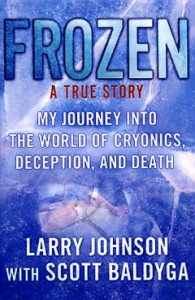
People are weird about death…which, I suppose, means that being ‘weird about death’ is actually quite normal. So, in some ways, having people dole out money to have their bodies frozen on the off chance that future technology will be able to resurrect them in a couple of decades isn't all that different from your workaday televangelist imploring ‘true believers’ to send in checks in order to ensure their place in a city in the sky. Author Larry Johnson's exposé isn't a condemnation of the concept of cryonics, or the viability of the science – it's about the bizarre (and often times super shady) inner workings he observed while working at the Alcor Life Extension Foundation.
The semi-journalistic aim of this book felt like sort of a mashup of The Genius Factory: The Curious History of the Nobel Prize Sperm Bank, and Going Clear: Scientology, Hollywood, and the Prison of Belief (both of which I happened to read earlier this year). However, in style and content, it was inferior to each and/or both—and this is the reason for my 2.5/5 star rating.
Why tell you this at all? Well, because there's quite a bit of controversy around the legitimacy of the book, its author, the criminal allegations…the list goes on. However, not being an expert myself, and feeling insufficiently interested to dig deeper into the book's veracity, I'm not equipped to give this truthiness score.* Long of the short is that this is a he-said/she-said corporate whistleblower case with the added allure of celebrity affiliation (primarily Ted Williams, but there are others to be sure).
Of Anesthetic Drugs & Butt Plugs
Larry, a veteran paramedic wasn't a delicate flower when it came to the death business. He'd spent the last several years on-call in Vegas (where insanity often reigns), and was even on-hand as a chopper paramedic for the Branch Davidian debacle in Waco. And yet, pretty much from day one he was a bit surprised at what he found kicking around the Alcor compound.
In addition to the expired paralytic drugs (why would you need to paralyze a dead person?), the butt plugs (umm...maybe those come in handy), and a diaspora of pizza boxes and tuna cans (turns out tuna cans make excellent pedestals for frozen human heads), the cast of characters he met seemed a bit off.† Examples?
- A woman who wears a bicycle helmet while in her car to protect her brain (not exactly sound science there)
- A CEO (Larry Johnson) and COO (Charles Platt) constantly sniping at one another (in battles dubbed ‘cryowars’ by Alcor staffers) via company-wide emails
- Oh, and a lurking hunchbacked computer scientist who inspired the observation made by Charles Platt below
“I suppose the most curious thing about Michael Perry,” Charles continued, “is that he removed his own testicles with a razor blade.”
For my money, the most egregious things Larry observes deal with bad lab protocol (e.g. removing Ted Williams' head when he was supposed to be a full-body patient), and the kind of gross environmental and worker-safety negligence that occur when an industry lacks any form of oversight (e.g. if a body pretty much decays in a van, you shouldn't just hose the thing out before returning it to the car rental company).
Yes, referring to death as the end of a patient's “first lifecycle” is a little odd, and helping a patient to reach that end point is (in most states) illegal, but it also doesn't sound like that was the norm. Threatening Johnson's life is definitely not cool, but there's just not much to say about that.
As far as Ted Williams goes, it sounds like Alcor (at most) aided and abetted Williams' greedy scoundrel of a son, John Henry Williams. I haven't been able to find the full-length piece on this that Johnson wrote for Sports Illustrated in 2003 (you can get the gist from ESPN's coverage of the saga), but what likely made for a fascinating magazine article was just too drawn out in book form.
______________________________________________
* So, if all that death threat business from the cryo-fanatical fringe turns out to be true, feel free to just blame Larry.
† As for the obvious questions as to why Larry wouldn't make an immediate b-line for the exit, he chalks this up to being a bit of an adrenaline junkie. But, yes, I too was confused about this aspect of Larry's tale.
 2
2
The Master of Disguise: My Secret Life in the CIA
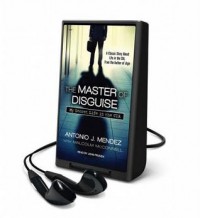
The book's author (and ex-CIA agent), Antonio Mendez, also wrote Argo, which was/is, IMHO, just a better book. I'd say more, but I'm on a frantic book logging catch-up scramble, so, for now, I'll leave it at that.
Fooling Houdini: Magicians, Mentalists, Math Geeks, and the Hidden Powers of the Mind

The fact that this book was written without a single allusion to everyone's favorite illusionist, Gob Bluth , is basically a crime against humanity (or at least against the laws of pop culture reference-dom). This missed opportunity is especially egregious, given that our author/magician, Alex Stone, is, at one point,kicked out of the Academy of Magical Arts!
”I'll be honest. I'm just more comfortable with an Alliance-approved magician.“
If you're looking for a book that interweaves science and magic (and the interchange of knowledge between the two), I highly recommend Sleights of Mind: What the Neuroscience of Magic Reveals about Our Everyday Deceptions by Stephen L. Macknik and Susana Martinez-Conde.
Our Kind of Traitor
 Definitely more 3.5/5 stars than 3. This was my first [a:John le Carré|1411964|John le Carré|https://d.gr-assets.com/authors/1234571122p2/1411964.jpg], and I plan on making it the first of many.
Definitely more 3.5/5 stars than 3. This was my first [a:John le Carré|1411964|John le Carré|https://d.gr-assets.com/authors/1234571122p2/1411964.jpg], and I plan on making it the first of many.
Source: K-I-N-G, eduardem
 1
1
 1
1
The Silkworm (Cormoran Strike #2)

Starting around the sixth Harry Potter adventure, each time I've sat down to read another of J.K. Rowling's books (in this case as Robert Galbraith), I'm prepared to discover that I had crossed some imagined line of well-read maturity leaving me out of love with her work. It just never happens.
Since I read The Cuckoo's Calling, I've logged far more literary hours in the company of detectives and the like. But, as it turns out, Cormoran Strike and Robin continue to delight me and effortlessly pull me into their latest exploits. Honestly, if I weren't hoarding stars in case of an upcoming embargo, this might have been a fiver.
 1
1
The Information: A History, a Theory, a Flood

The amount of information (pun acknowledged, but not intended) that James Gleick was able to contain in the book is mind-boggling (Claude Shannon could probably tell you what the physical cost of the logical work my mind did while reading it was, but I, alas, cannot).
I'm sure that for those who are well-versed in information theory, some of his omissions were glaring and seemingly arbitrary, but there is nothing wrong with a book that leaves you wanting more and feeling sufficiently motivated to go out and find it.
The Information, with all that it contains, is a likely candidate for the list of non-fiction books I loved, took copious notes on while reading, and would recommend, but fail to review because there is just so much to be said. However, it's Ada Lovelace Day, and without Gleick I would have no clue as to who she was (and she was awesome).
My lack of time and in-depth knowledge of Lovelace suggest that my attempt to describe her right now would be inadequate, so I'll just recommend a nice New Yorker article “Ada Lovelace, The First Tech Visionary” (and/or any of the ALD features that are bound to grace the interwebs today).
 1
1
Audible FREEBIE! Mitosis: A Reckoners Story

I know precisely nothing about this book other than the fact that it's FREE on Audible right now, and I love free stuff!
Heck, it might even be a part of a series that I haven't read the requisite books for (which seems to be the case from checking out the other Brandon Sanderson stories on Audible), but I still can't resist downloading it just in case I do read the series at some point!
If you're not into blindly amassing all that is free in the internet era, I've included the publisher's summary below, and I'm sure that its Goodreads page has some interesting takes on it too!
Publisher's Summary
From Brandon Sanderson, the #1 New York Times best-selling author of Words of Radiance, coauthor of Robert Jordan's Wheel of Time series, and creator of the internationally best-selling Mistborn Trilogy, comes "Mitosis", a short story set in the action-packed world of Steelheart: The Reckoners series. Epics still plague Newcago, but David and the Reckoners have vowed to fight back. Catch all the action before Firefight, the exciting sequel to Steelheart, hits Audible in January 2015.
©2013 Dragonsteel Entertainment, LLC (P)2014 Audible Inc.
 1
1
Mitosis
 I know precisely nothing about this book other than the fact that it's FREE on Audible right now, and I love free stuff!
I know precisely nothing about this book other than the fact that it's FREE on Audible right now, and I love free stuff! Heck, it might even be a part of a series that I haven't read the requisite books for (which seems to be the case from checking out the other Brandon Sanderson stories on Audible), but I still can't resist downloading it just in case I do read the series at some point!
If you're not into blindly amassing all that is free in the internet era, I've included the publisher's summary below, and I'm sure that its Goodreads page has some interesting takes on it too!
______________________________________________
Publisher's Summary
From Brandon Sanderson, the #1 New York Times best-selling author of Words of Radiance, coauthor of Robert Jordan's Wheel of Time series, and creator of the internationally best-selling Mistborn Trilogy, comes "Mitosis", a short story set in the action-packed world of Steelheart: The Reckoners series. Epics still plague Newcago, but David and the Reckoners have vowed to fight back. Catch all the action before Firefight, the exciting sequel to Steelheart, hits Audible in January 2015.
©2013 Dragonsteel Entertainment, LLC (P)2014 Audible Inc.
The Brief Wondrous Life of Oscar Wao
![THE BRIEF WONDROUS LIFE OF OSCAR WAO[The Brief Wondrous Life of Oscar Wao] BY Diaz, Junot(Author)paperback on Sep 02 2008 - Junot Diaz](http://booklikes.com/photo/max/200/300/upload/books/98/58/eecdd61332b8fbc8a8d254a17770f290.jpg)
In an interview I read (but can't seem to find) with Adam Johnson, author of The Orphan Master's Son*, Johnson describes how the individual narratives of the people of North Korea were inseparable from that of their (then) Dear Leader, Kim Jong-il. So too were the stories of those living in the Dominican Republic under the dictatorial leadership of Rafael Trujillo subsumed and intertwined with that of El Jefe (AKA “the Failed Cattle Thief, and Fuckface”).
Author Junot Díaz describes this in the pop culture trivia and Spanish-laced voice of our (sometimes) narrator, Yunior.
“He was our Sauron, our Arawn, our Darkseid, our Once and Future Dictator, a personaje so outlandish, so perverse, so dreadful that not even a sci-fi writer could have made his ass up.”
The sepulchral powers that shaped the life (brief, and wondrous) of Oscar Wao, however, were (are?) bigger and beyond those of any mortal.
“They say it came first from Africa, carried in the screams of the enslaved; that it was the death bane of the Tainos, uttered just as one world perished and another began; that it was a demon drawn into Creation through the nightmare door that was cracked open in the Antilles. Fukú Americanus, or more colloquially, fukú --generally a curse or doom of some kind; specifically the Curse and the Doom of the New World.”
Fukú – intoxicating to consider, puts this story on a new vibration that's somehow fundamentally ineffable (which is just a fancy way of saying that I can't figure out how to describe it).
As per usual, I'm not uncovering a hidden gem in The Brief Wondrous Life of Oscar Wao. To be honest, it might have sat on my shelf unread if it weren't for this being a brilliant book club pick, as its title had me envisioning some sort of “triumphant” tear-jerker. However, I did have a bit of fun with fukú in photoshop (which I'll have to off-set with a Zafa! series at some point). So, in lieu of coherent commentary, I'll leave you with some bits and pieces of that (the contents of which probably will make little sense if you haven't read the book, so, you know, read a book).
______________________________________________
* Which, FYI, is yet another great book I recently read, and highly recommend, but haven't found the time to review.
 3
3
The Girl with the Long Green Heart (Hard Case Crime #14)
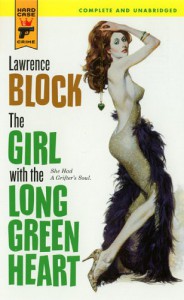
Even after taking the fall, after doing a bit in the big house (San Quentin aka Q, to be specific), it's hard for a born confidence man to keep it on the straight and narrow. That's not to say that our man, Johnny Hayden isn't trying. But, giving up the grift is never easy.
The ingredients are nothing new—they never really are. Johnny, working the night shift at a bowling alley, pinching pennies like your average rube, is approached by a friend from the past pitching Johnny the classic plea to help him out with one last job. The foundation work's been laid, and the mark (flush with vanity, greed and overconfidence in himself) is perfect for the picking.
The stages of the con are still the same, but each job is different nonetheless, and Lawrence Block knows how to dish each act out at the perfect pace. The reader is like the shill, playing the bit part, watching the evolution with a mix of anticipation and dread, and loving every moment.
 3
3
The Life of Martin Van Buren as told by Davy Crockett

Usually I just use the name of the book as the title for my review, however in this case the full title, “The Life of Martin Van Buren: Heir-Apparent to the “Government” and the Appointed Successor of General Andrew Jackson: Containing Every Authentic Particular by Which His Extraordinary Character Has Been Formed: With a Concise History of the Events That Have Occasioned His Unparalleled Elevation: Together With a Review of His Policy as a Statesman,” made that a bit impractical. The author has a tendency to be incredibly long-winded, but I'm getting ahead of myself.
Reading Rationale
Aside from the fact that there isn't a particularly wide selection of Martin Van Buren biographies out there (and the fact that this one was free), it was the author's name that really piqued my interest in this one. Due to an apparent lack of folkloric literacy, I was shocked to find that Davy Crockett was actually a real person. I thought the coonskin cap-wearing, cabin-dwelling guy belonged among the ranks of Paul Bunyan or (well, I was gonna say Johnny Appleseed, but it turns out he was real too).
In my defense, Disney's appropriation of Crockett as a character threw a wrench in my reasoning. Is Jack Sparrow real? Do I need to start watching out for Mr. Toad next time I'm on the expressway?
Crockett's Case
To put it lightly, Davy Crockett was not a fan of MVB. Though he certainly knew how to draw a crowd when canvassing the country to tell his tales in person, Crockett's thoughts on Van Buren were (evidently) too important not to be put to the page.
Crockett's complaints were reminiscent of the anti-Kerry ads in the 2004 presidential race; MVB, it would seem, was a flip-flopper, and that (though he was basically hand picked by Jackson as his successor) he is no Old Hickory. Of course, Crockett puts things in different words:
“Every thinking man...must see that Van Buren is as opposite to General Jackson as dung is to a diamond.”
Yeah, Crockett keeps it folksy, which is fun—well, fun to a point. The thing about Crockett (to this modern reader) is that he undermines his clever turns of phrase by going on, and on, and on. For example:
“Statesmen are gamesters, and the people are the cards they play with.”
Ok. Good analogy Davy, but then he goes on to list how this applies to shuffling, card tricks, games of whist, games of poker, and just about anything having to do with cards ever.
Martin Van Buren: the Original Pol
What Crockett says is true. MVB was happy enough to switch allegiances in order to get himself in position to be on the winning side of things. And was he (Van Buren) a “selfish and insidious deceiver”? Probably. After all, they did end up calling him the “Little Magician” for landing on the winning side of every debate.
Crockett can be given points for running an effective smear campaign (true or not, the facts offered are definitely of the “attack ad” flavor). But MVB landed in office nonetheless.
Because this was a pre-election book (duh), I actually bothered to read another (mercifully brief) Van Buren piece, Martin Van Buren: lawyer, statesman and man. As to whether or not I will summon the strength to review that one, only time will tell.
 2
2
 3
3
Black Cross

Book-reader's Bias: Due to my recent non-fiction readings on WWII heroic men of science material, I was probably a bit more apt to be underwhelmed by the fictional portrayals of same in this book than I might have otherwise been. It's an interesting adventure story with decent verisimilitude, oh and also science.
Gas! Gas! Quick Boys!
My 11th grade history class (Modern Euro) was a pretty lackluster affair. However, it did introduce me to one of the most memorable and powerful reflections on war I've come across to date, Wilfred Owen's poem “Dulce et Decorem Est.” (If you haven't read the poem before, go do it — in addition to being great, it's only four stanzas long, so you have no good excuse).
So, what does a poem from the First World War have to do with a piece of WWII historical fiction? Actually, quite a bit. The dread and the trauma from WWI was still very present for (among others) the book's protagonist and pacifist doctor/scientist, Mark McConnell, whose veteran father never truly recovered from his encounters with chemical warfare. This is among the book's “historical artifacts”; Londoners (below) were taught protocols and drilled for potential attacks in the densely populated metropolis.
Geneva Protocol be damned, no one was feeling particularly confident that chemical weapons were being taken out of play. A nice little Slate article led me to the four posters (below) intended to help with identifying the effects/presence of gases.
Of the gases above (according to the story), phosgene was considered the heavy hitter. However, the life-altering plot twist in Black Cross comes with the discovery by the British that Reich scientists had discovered how to produce and make use of the deadlier gases, sarin, and soman.
I'm Blinding You With Science!
I don't know how you guys went about studying for physiology and such in your college years, but, for me, it involved a lot of water coloring.* So, since you're probably asking yourselves what the BFD is about the aforementioned gases, allow me to illustrate (both figuratively and literally).
See those little blue dotty things? Those are nice little synaptic vesicles chock full of a nice little neurotransmitter called acetylcholine (ACh). ACh is very exciting stuff...no, I'm serious, it binds to its little receptors (on muscle fibers in this case) and opens the gate for sodium, and there's an action potential, and your muscles contract etc. (I numbered the steps in my little diagram, so you can work out the details for yourselves).
What my drawing fails to depict is what usually goes down in the aftermath; namely, that a sexy little enzyme called Acetylcholinesterase (AChE) shows up. At first glance, you might think that AChE is a bit of a Debbie downer— its job is to clean up the party started by our exciting pal ACh. However, without AChE there to do its thing, those channels become desensitized to ACh and this really shuts things down.
So, if for some reason AChE were to be held back, the word “inhibited” comes to mind, these neuromuscular transmissions, helpful for things like breathing, would fail...and you're gonna have a bad time. And, guess what sarin, soman and organophosphates are all about?
If for some strange reason you prefer to get your “science” from the CDC, rather than some book-reading weirdo on the internet, see below.
Of Nazis & Nerve Gas
If you're looking to kill stuff, then nervous system disruption is a pretty good tactic. Thus, German chemist, Gerhard Schrader, tasked with finding a better insecticide, was tinkering about with organophosphates. When he sprayed some methyl-isopropoxyl-fluorophosphine oxide on a patch of leaf lice not only did the bugs bite the dust, but soon (coming into contact with the aforementioned liquid) he and his lab assistants were going blind and twitching about.
The Nazi powers that be, however, had applications other than crop preservation in mind. Otto Ambros (who, like Schrader, was employed at IG Farben) was soon overseeing the production and stockpiling of poisonous gases which (you guessed it) were, of course, tested on the Nazi equivalent of vermin—concentration camp inmates.
Book? What Book?
So, yeah, Greg Isles has a whole story constructed around what was, and what might have been given the scientific scenario described. It's a good book, but, like I said, I'm probably more of a non-fiction girl myself.
______________________________________________
* What? It's hard to make yourself stare at all those receptors and chemical pathways. Bonus tip: The best way to memorize enzyme names is by pretending they're spells from Harry Potter. I literally flicked my wrist in wand-like motions while taking my neuro exams. Sure I looked crazy, but I also still remember Phenylethanolamine N-methyltransferase (obviously, the “spell” for converting norepinephrine to epinephrine). So, if that comes up in life, I'm totally ready for it.
 4
4
 2
2




